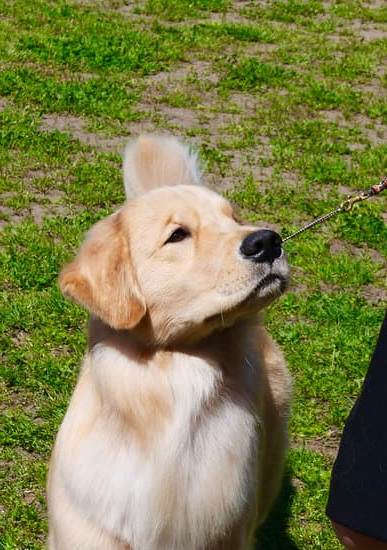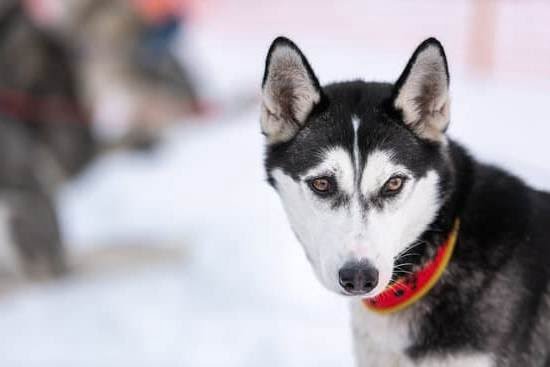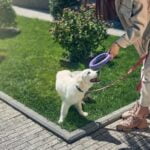Are you wondering how to potty train a dog water schedule effectively? Potty training your furry friend can be a challenging process, but establishing a consistent water schedule is crucial in ensuring their success. By understanding the importance of maintaining a routine for your dog’s water intake, you can make the potty training process smoother and more efficient.
When it comes to potty training, consistency is key. Dogs thrive on routine, and having a set water schedule can help regulate their bathroom habits. By following a structured approach to your dog’s water intake, you can better predict when they will need to go outside to do their business. This predictability is essential in teaching your dog where and when it is appropriate to relieve themselves.
In this article, we will delve into the basics of potty training your dog with a focus on establishing a routine for their water consumption. From monitoring how much water your dog drinks to implementing scheduled potty breaks, we will provide you with the tools and tips needed to successfully train your furry companion. So let’s dive in and learn how a consistent water schedule can play a vital role in potty training your dog.
The Basics of Potty Training
Potty training a dog requires patience, consistency, and a well-thought-out plan. One of the fundamental aspects of potty training is establishing a routine for your furry friend’s water intake. By creating a consistent water schedule, you can better predict when your dog will need to go outside to relieve itself. This foundational step sets the stage for successful potty training and helps prevent accidents in the house.
To start the training process, it is essential to understand your dog’s specific water needs based on factors such as age, size, and activity level. Typically, adult dogs should have access to water throughout the day, while puppies may need more frequent water breaks due to their smaller bladders.
When first introducing a water schedule, consider offering water during designated times such as after meals or playtime. This controlled approach allows you to monitor your dog’s drinking habits and anticipate when they will need to eliminate.
As you begin potty training with a structured water schedule, pay close attention to any patterns in your dog’s behavior. Note how long after drinking water they typically need to go outside and adjust your schedule accordingly. Consistency is key when training your dog to associate specific times for drinking with designated potty breaks.
Remember that every dog is unique, so be prepared to make adjustments based on their individual needs and progress in the potty training process. By setting a solid foundation with a consistent water schedule, you are on the right path towards successfully potty training your canine companion.
Establishing a Routine
To create a daily schedule for your dog’s water intake, it is recommended to offer water at specific times throughout the day rather than leaving it out constantly. This will help you monitor how much water your dog is drinking, making it easier to predict when they will need to go outside for potty breaks.
Ideally, water should be available after meals, during playtime, and before bedtime. By sticking to a set schedule, you can regulate your dog’s bathroom habits and prevent accidents indoors.
Monitoring your dog’s water consumption is key in ensuring that they stay hydrated without overdrinking. Keep an eye on their bowl throughout the day and refill as needed according to the established schedule.
If you notice that your dog is consuming an excessive amount of water or having accidents indoors frequently, it may be necessary to make adjustments to their water schedule. Remember that consistency is key in successful potty training, so be patient and persistent in following the routine you have set up for your furry friend.
Monitoring Water Consumption
Understanding your dog’s water consumption is essential in potty training. Maintaining a consistent water schedule not only helps in managing potty breaks but also keeps your dog hydrated and healthy. Here are some helpful tips for monitoring how much water your canine companion is drinking:
- Measure water intake: Keep track of the amount of water you fill up your dog’s bowl with each time. This will give you an idea of their daily consumption.
- Observe behavior: Pay attention to how frequently your dog goes to drink water. Increased or decreased thirst levels could indicate potential health issues.
- Consult a vet: If you notice any drastic changes in your dog’s water intake, it’s best to seek advice from a veterinarian. They can provide guidance on what may be causing these changes.
Consistency is key when it comes to monitoring your dog’s water consumption. By establishing a routine and closely observing their behavior, you can effectively track their hydration levels and adjust the water schedule accordingly for successful potty training.
Remember, every dog is different, so it may take some time to figure out the right balance for your furry friend. Patience and perseverance are vital as you work towards establishing a solid routine that works best for both you and your pet. With these monitoring tips in mind, you’ll be better equipped to navigate the potty training journey with your canine companion successfully.
Implementing Scheduled Potty Breaks
Setting a Routine
When it comes to potty training your dog, establishing a consistent schedule for potty breaks is crucial. One key aspect of this schedule is setting specific times for your dog to go outside. By implementing scheduled potty breaks, you can help your dog develop a routine and learn when and where they should be eliminating.
Determining Frequency
The frequency of potty breaks will depend on your dog’s age, size, and breed. Puppies, for example, may need to go out more frequently than adult dogs. Generally, it’s recommended that adult dogs should be taken out every 4-6 hours during the day. However, it’s important to observe your dog’s behavior and adjust the schedule accordingly.
Consistency Is Key
Consistency is crucial when implementing scheduled potty breaks for your dog. Make sure to take them out at the same times each day, such as first thing in the morning, after meals, before bedtime, and whenever they show signs of needing to go. Repetition will help reinforce the habit and eventually lead to successful potty training.
Reward System
When it comes to potty training your dog, using a reward system is essential to encourage good behavior. Positive reinforcement is a powerful tool in shaping your dog’s actions and creating lasting habits. The key is to reward your dog immediately after they exhibit the desired behavior, such as going potty in the designated area outside. This will help them associate the action with a positive outcome, making them more likely to repeat it in the future.
One effective way to implement a reward system is by using treats that your dog loves. Keep a stash of small, tasty treats on hand whenever you take your dog outside for a potty break. As soon as they successfully go potty in the right spot, praise them enthusiastically and give them a treat. This positive association will reinforce their good behavior and make them eager to repeat it for another treat next time.
In addition to treats, you can also use verbal praise, pets, or playtime as rewards for good potty behavior. Every dog is different, so it’s essential to find out what motivates your furry friend the most.
Consistency is key when using a reward system – make sure to reward your dog every single time they go potty outside until they fully grasp the concept of where they should do their business. With patience and positive reinforcement, your dog will soon learn how to potty train effectively according to the water schedule you have set for them.
| Reward System Benefits | Effective Ways of Rewards |
|---|---|
| Encourages good behavior | Treats that dogs love |
| Creates positive association with desired actions | Verbal praise and pets |
| Strengthens bond between owner and pet | Consistent rewarding after every successful attempt |
Handling Accidents
Recognizing Signs of an Accident
It’s important to be able to recognize the signs that your dog may have had an accident in the house. Some common indicators include sniffing around, circling a particular area, or suddenly disappearing from sight. If you catch your dog in the act of having an accident, immediately interrupt them with a firm “no” and take them outside to their designated potty area.
Clean Up Properly
Accidents are bound to happen during the potty training process, so it’s crucial to clean up any messes properly to prevent your dog from marking the same spot again. Use an enzymatic cleaner specifically designed for pet accidents to thoroughly clean and remove any odors. This will help deter your dog from repeating the behavior in the same spot.
Stay Calm and Patient
It’s essential to remain calm and patient when accidents occur during the potty training process. Accidents are a natural part of learning for your dog, so getting frustrated or angry will not help them understand where they should be going potty. Instead, reinforce positive behavior when they do go in the correct spot and continue with consistency in your water schedule and potty breaks.
Remember that potty training takes time and dedication, so don’t get discouraged if there are setbacks along the way. With patience, consistency, and positive reinforcement, you can effectively train your dog on a water schedule for successful potty training.
Adjustments and Troubleshooting
As you progress in potty training your dog, it’s important to be flexible with the water schedule based on your dog’s progress. If you notice that your dog is having accidents more frequently after drinking water at certain times, consider adjusting the schedule accordingly. For example, if your dog tends to have accidents shortly after drinking a large amount of water in the evening, you may want to limit their intake during that time.
Monitoring your dog’s behavior and bathroom habits can provide valuable insights into how effective your current water schedule is. Keep track of when accidents occur and how much water your dog is consuming throughout the day. This information can help you pinpoint any patterns or issues that may need to be addressed with adjustments to the schedule.
Remember that every dog is unique, so what works for one may not work for another. Be patient and observant as you make changes to the water schedule. Consistency is key in potty training, so give your dog time to adjust to any modifications before expecting significant improvements. By being attentive and responsive to your dog’s needs, you can fine-tune the water schedule for optimal results.
| Key Points | Details |
|---|---|
| Monitor Behavior | Keep track of accidents and water intake to identify patterns |
| Be Patient | Give your dog time to adjust to schedule changes |
| Customize for Your Dog | Adjust the water schedule based on your individual pet’s needs |
Consistency Is Key
One of the essential aspects of potty training is creating a structured environment for your dog to thrive in. By setting specific times for them to go outside, you are helping them understand when and where it is appropriate to relieve themselves. This routine not only helps with their bladder control but also reinforces good behavior through positive reinforcement.
When accidents do happen during the potty training process, it’s important to handle them calmly and with patience. Understanding that setbacks are normal and part of the learning experience will help both you and your dog stay motivated.
Making adjustments to your water schedule based on your dog’s progress and consistently sticking to the routine will ultimately lead to successful potty training. Remember, patience, consistency, and clear communication with your furry friend are key elements in achieving a well-potty trained dog.
Frequently Asked Questions
Should I Give My Dog Water on a Schedule?
It is not necessary to give your dog water on a strict schedule. Instead, it is recommended to provide access to fresh water throughout the day. However, be mindful of their specific needs, especially during hot weather or increased activity.
How Often Should I Give My Puppy Water While Potty Training?
When potty training a puppy, it is essential to offer water regularly to prevent dehydration. A good rule of thumb is to give your puppy water every few hours, especially after meals and playtime. Monitor their intake and adjust as needed.
Should I Leave Water Out All Day for My Dog?
Leaving water out all day for your dog is generally a good idea to ensure they stay hydrated, especially when you are not home. However, monitor their consumption to avoid overdrinking which could lead to accidents in the house. Remember to refresh the water regularly to keep it clean and fresh for your furry friend.

Welcome to the blog! I am a professional dog trainer and have been working with dogs for many years. In this blog, I will be discussing various topics related to dog training, including tips, tricks, and advice. I hope you find this information helpful and informative. Thanks for reading!





